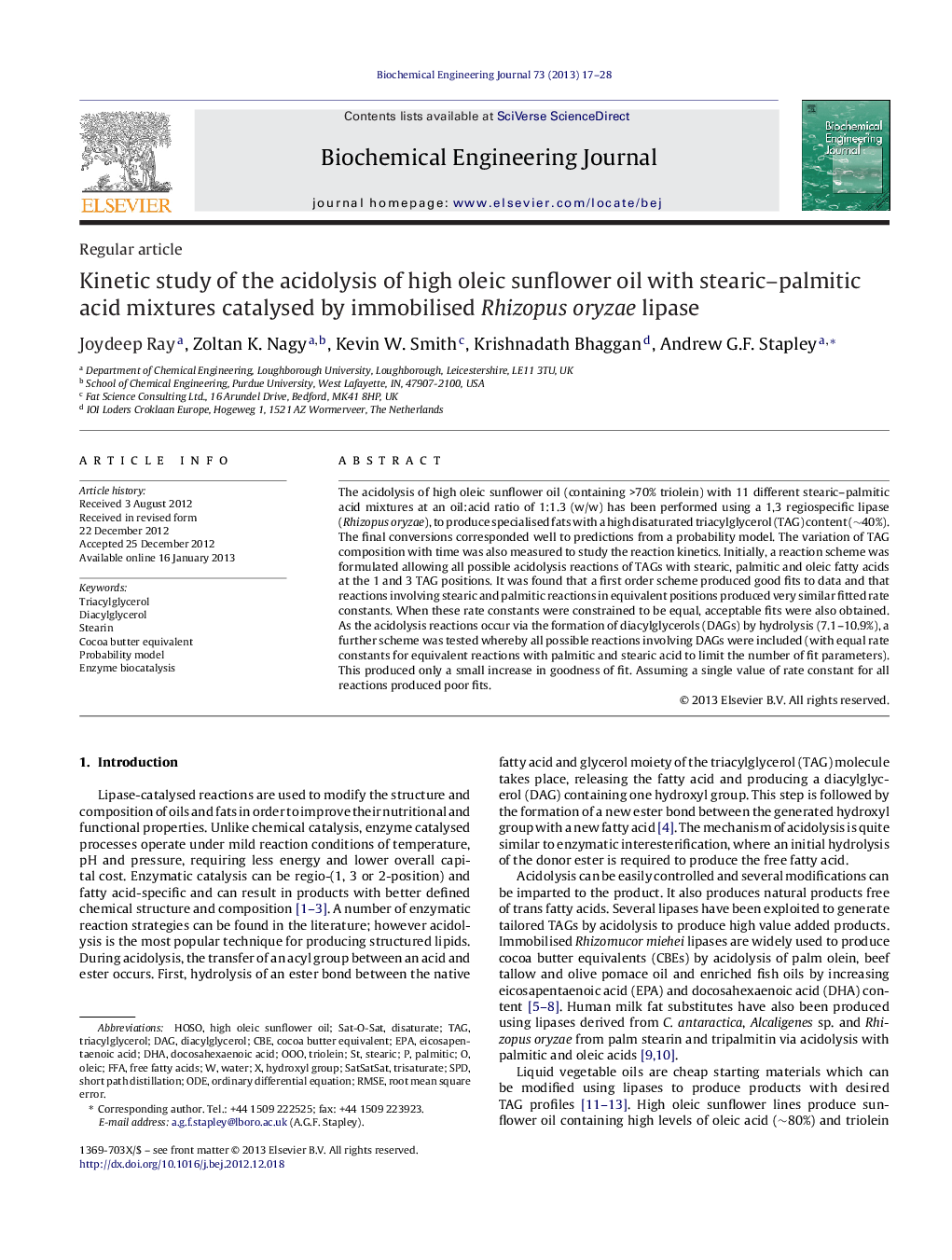| کد مقاله | کد نشریه | سال انتشار | مقاله انگلیسی | نسخه تمام متن |
|---|---|---|---|---|
| 3349 | 165 | 2013 | 12 صفحه PDF | دانلود رایگان |

The acidolysis of high oleic sunflower oil (containing >70% triolein) with 11 different stearic–palmitic acid mixtures at an oil:acid ratio of 1:1.3 (w/w) has been performed using a 1,3 regiospecific lipase (Rhizopus oryzae), to produce specialised fats with a high disaturated triacylglycerol (TAG) content (∼40%). The final conversions corresponded well to predictions from a probability model. The variation of TAG composition with time was also measured to study the reaction kinetics. Initially, a reaction scheme was formulated allowing all possible acidolysis reactions of TAGs with stearic, palmitic and oleic fatty acids at the 1 and 3 TAG positions. It was found that a first order scheme produced good fits to data and that reactions involving stearic and palmitic reactions in equivalent positions produced very similar fitted rate constants. When these rate constants were constrained to be equal, acceptable fits were also obtained. As the acidolysis reactions occur via the formation of diacylglycerols (DAGs) by hydrolysis (7.1–10.9%), a further scheme was tested whereby all possible reactions involving DAGs were included (with equal rate constants for equivalent reactions with palmitic and stearic acid to limit the number of fit parameters). This produced only a small increase in goodness of fit. Assuming a single value of rate constant for all reactions produced poor fits.
Figure optionsDownload as PowerPoint slideHighlights
► High oleic sunflower oil can be acidolysed with palmitic and stearic acids to produce TAG mixtures for CBE formulations.
► Equilibrium TAG compositions were well predicted by a probability based model.
► Acidolysis reactions were successfully modelled using first order kinetics.
► Fitted rate constants were similar for equivalent reactions involving palmitic and stearic acids.
► Allowing for the formation of DAGs slightly improved kinetic model fits.
Journal: Biochemical Engineering Journal - Volume 73, 15 April 2013, Pages 17–28